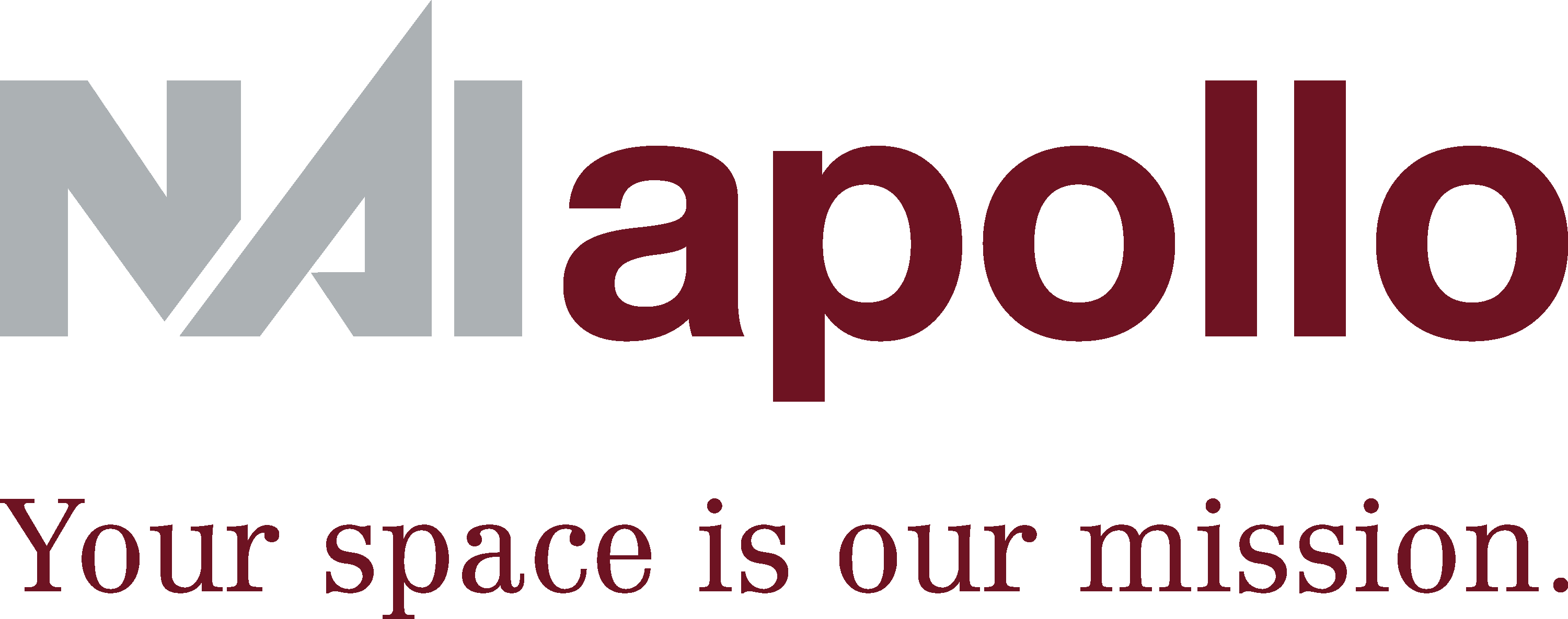Logistics property market in the Rhine-Main area again registers below-average take-up for Q2 2023
Frankfurt am Main, 18th July 2023 – The market for warehouse and logistics space in the Rhine-Main area again produced only a below-average result for the second quarter of the year. NAI apollo, partner of the NAI apollo group, calculated that space take-up by tenants and owner-occupiers amounted to about 84,900 sqm in the April-June quarter. Although this exceeded take-up of just under 62,200 sqm (Q1 2023) and 73,900 sqm (Q4 2022) in the two previous quarters, it represents a significant decline compared to recent Q2 results with a five-year average of 178,200 sqm (Q2 2018 - Q2 2022). Take-up in the first half of the year totalled around 147,000 sqm, which represents the weakest result for the last ten years. The figure is as much as 50 % below both the ten-year and five-year averages for first half years.
Economic conditions and low supply of space influence the market development
The macroeconomic conditions have not improved significantly of late and economic forecasts are deteriorating again. Continuing high inflation and the associated rise in interest rates, as well as the more cautious consumer sentiment, are having an impact on warehouse and logistics property users, with consequences for the lettings markets. “Market players are certainly acting more cautiously at the moment. However, this is still not the main cause of weak market activity in recent months and quarters. Demand for warehouse and logistics space in the Rhine-Main area remains at a high level in the current market phase and is additionally supported by the planned construction of new production and warehouse facilities,” said Michael Weyrauch, Head of Industrial and Logistics at NAI apollo. “As we have frequently mentioned, the shortage of space remains the key bottleneck, both in terms of available space in property stock that meets user requirements regarding location, quality and size, and development sites that are suitable for warehouse and logistics use,” added Stefan Weyrauch, Co-Head of Industrial and Logistics at NAI apollo. The segment for large spaces is especially affected, but supply is scarce in all other segments, as reflected by the rents. For example, the prime rent for warehouse and logistics spaces larger than 5,000 sqm has risen by 30 cents to €7.60/sqm in the past three months.
Take-up in new project developments remains at a low level
In addition to the shortage of building land on which new projects can be realised, rising construction and financing costs are hampering the construction by developers of new facilities. As a result, space take-up in newly built projects, which includes the start of owner-occupier construction projects and lettings in project developments, has remained at a low level. In total, 38,600 sqm is attributable to the new-build segment and almost corresponds to the previous year’s result. However, there is a significant disparity between this figure and the five-year average for first half-years (H1 2018 - H1 2022: 107,400 sqm), with take-up in the new-build segment of up to 150,000 sqm. Take-up in existing stock has also declined, but to a much lesser extent. The weaker activity in new projects also affects take-up within the various groupings by size. All size categories registered declines compared to the medium-term average. “However, this is most pronounced in the 10,000-sqm-plus segment, which is often reliant on the need for new developments due to a shortage of a suitable supply in the existing stock. Here, take-up fell by 71.6 % compared to the five-year average and 51.4 % compared to the previous year, which will clearly have an impact on the overall annual result. Larger spaces generated total take-up of 37,900 sqm and remained the most important grouping, but this segment has lost its dominance of previous years,” said Dr Konrad Kanzler, Head of Research at NAI apollo. The largest deals involved the sub-letting of about 17,000 sqm of hall space to Müller – Die lila Logistik in Eppertshausen as well as the leasing of 10,600 sqm by ERNST SCHMITZ Logistics & Technical Services in a new building project in Idstein.
Logistics service providers are the most active users, followed by retailers
As in the previous year, transport, warehousing and logistics companies remained the most important users of space in the past six months. They accounted for a 36.4 % market share or take-up of 53,500 sqm. Retailers, which still held the leading position in the spring also due to lettings by the e-commerce sector, fell to second place with 43,900 sqm or 29.9 %. However, both sectors reduced their take-up volume compared to the previous year. On the other hand, the third-placed industry and manufacturing sector was able to make gains with 29,900 sqm or a market share of 20.3 %, narrowing the gap to the two leaders.
“The sub-markets with the highest take-up within the Rhine-Main region are the traditionally strong southern areas, which together account for a market share of 45.3 %. Next is the ‘East’ sub-market with 25.7 %, primarily owing to several lettings in the commercial and logistics park ‘Holzpark Hanau’, which is also one of the few speculative construction projects. The ‘North-West’ was able to make significant gains, especially as a result of the lease signed by Ernst Schmitz in Idstein, and now has a market share of 17.8 %,” said Stefan Weyrauch. On the other hand, take-up fell in the ‘North-East’, where in previous years large deals in project developments undertaken by Dietz AG in the inter-municipal commercial area “Limes” near Hammersbach were responsible for a considerable share of take-up. In the current year, there have been almost no lettings here to date.
General conditions remain difficult
The deterioration in the overall economic outlook and cautious sentiment among market participants will continue to influence the warehouse and logistics market in the Rhine-Main region in the coming months. “Future expansion efforts will be curtailed to some extent. New lettings will continue to be postponed in some cases or even cancelled altogether,” said Konrad Kanzler. At the same time, however, user demand remains at a generally high level and clearly exceeds the current supply of suitable vacant space. “New construction projects do not struggle to find users, as shown by the recently approved HubOne business park in Langenselbold, half of whose anticipated 20,000 sqm of office and hall space has already been let. However, in view of the shortage of building land for new projects and rising construction costs, developers are unlikely to contribute significantly towards improving the balance between supply and demand,” added Stefan Weyrauch. The situation has been eased somewhat by an increased supply of sublet space resulting from previous major lettings, some of which has remained unused. “The issues of sustainability and energy efficiency are becoming increasingly important. Very few existing buildings are ESG-compliant and this is often only possible in new buildings, which increases costs even more. However, we see a willingness on the part of users to pay higher rents for high-quality space that meets user requirements," said Michael Weyrauch. A further increase in rents is therefore foreseeable in the short term.

